Arabian horses are known for their elegance, beauty, and spirit, but did you know there are different types of Arabians? We will be sharing the different types of purebred Arabian horses and their differences.
There are six types of purebred Arabian horses: Egyptian, Russian, Polish, Spanish, Crabbet, and Shagya. Though each type of Arabian is similar, they each have unique characteristics and history.
See our more detailed list below about each Arabian horse:
Egyptian Arabian
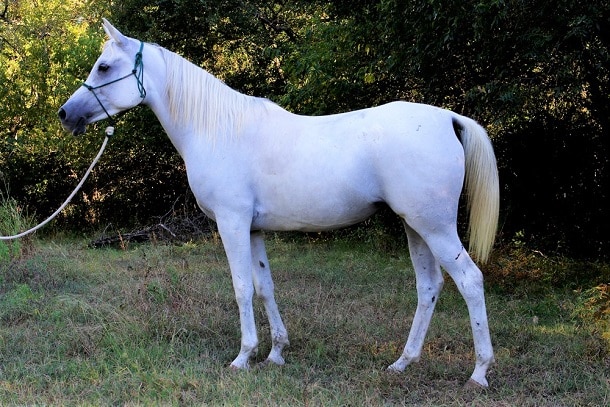
J A Sullivan / Shutterstock.com
The Egyptian line is the purest of all Arabians, as its pureblood status comes from an unbroken lineage. Egyptian Arabians can trace their bloodlines back to a herd in Egypt owned by Viceroy Mohammed Ali and his grandson Abbas Pasha I.
Unlike other types of Arabians that have been bred interchangeably to increase the gene pool, the Egyptian line remains pure. This unique type of Arabian can trace 100% back to the Bedouin tribes of Arabia. Though they had been bred for hundreds of years, it wasn’t until 1952 that a catalog began to trace the Egyptian line pedigrees to designate their heritage officially.
Today, breeders still seek out preserving this historical type of Arabian. The Egyptian Arabian is cherished for its smaller, refined builds with very dished faces and high tail carriage. They are typically smaller in build than other Arabians and range in height from 14.2 to 15.2, coming in a wide variety of colors, including rabicano roan.
The Eyptian Arabian only makes up around 2% of the breed. This line is sought after by serious breeders for their purity and elegant builds.
Russian Arabian
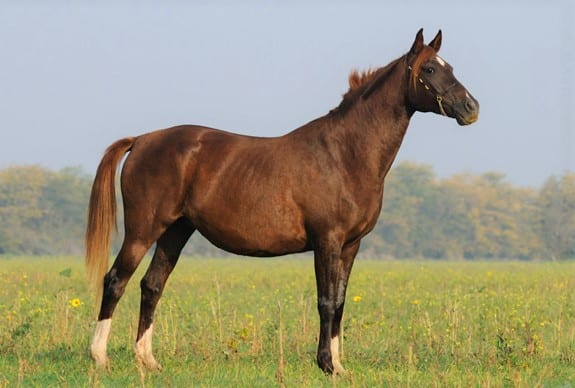
As the Arabian breed was introduced to Eastern Europe, many Russians quickly became infatuated with them. In the 17th century, Czars and nobility started a breeding program of these magnificent horses, which led to the Russian Arabian development.
To achieve their desired horse, they bred from many different bloodlines, including Polish and Crabbet. Count Orlov, Count Stroganov, and Prince Sherbatov were notable breeders that traveled to the Middle East and brought back nearly 30 horses for breeding. Sadly, the Russian Revolution led to the death of many Arabian horses along with their records.
Fortunately, those passionate about the breed purchased six mares and one stallion from France to reestablish the breeding stock at a state-controlled breeding program called Tersk.
Shortly after, the government purchased 25 horses from Crabbet Park to introduce into the stock. Later, after WWII took a toll, Polish bloodlines were introduced to the breeding program.
The Russian Arabian has been bred for its athletic ability, specifically that of a racing horse. Most horses from the Russian line stand around 15 hands tall, with solid yet refined builds and friendly personalities. Each horse traces back to the Russian Arabian Stud Book. Today, they are considered an ideal first horse, known for their calm temperament.
Polish Arabian
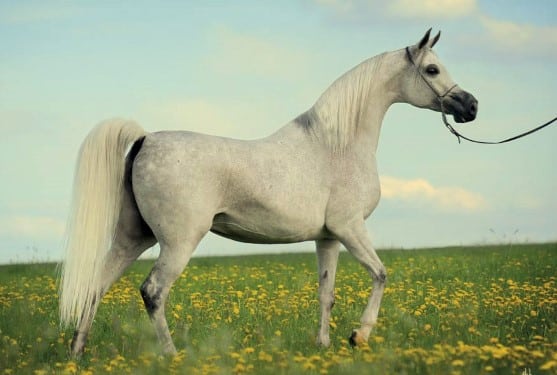
The history and development of the Polish Arabian is long intertwined with war. Since Poland has no natural boundaries, it has been the subject of attacks from larger, stronger nations for centuries.
Over time, the Polish grew fond of their enemies’ mounts from the Middle East and Asia, who often rode Arabian horses. The horses became sought after prizes of war, and soon the Polish had set up a stud farm with the Arabian horses they captured. As early as the 16th century, writings have mentioned the breeding of purebred Arabians within Poland.
In 1699, a truce between Poland and Turkey led to Poland acquiring Arabians, which led to the breeding of these prized horses to grow thanks to the increased bloodstock.
When WWI happened, nearly all the breeding stock was wiped out. Fortunately, the Polish people built the breeding program back up, and the Arabian Horse Breeding Society was formed in 1926.
The Polish breeding program has always been based on broodmares. There are many damn lines in use, with the sire lines being more diverse.
As time went on, the Polish bloodlines were split into two types, the Seglawi and the Kuhailan. The Seglawi, which are the most popular type of horse in America, are known for their refinement and beauty, whereas the Kuhailan are known for their athleticism.
Polish Arabians are a popular choice as they are intelligent and willing to please. They have beautiful arched necks, elegant builds, and high set tails, true to the Arabian breed.
Spanish Arabian
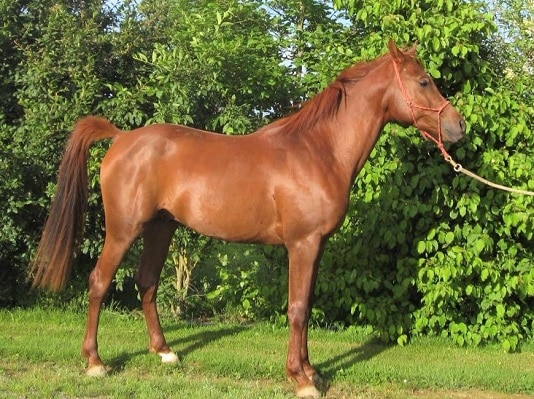
The Spanish Arabian is considered the rarest type of Arabian horse, making up roughly 1% of the breed. They have a long history that traces back several hundred years.
The Spanish military was long in charge of the breeding of horses in Spain. The Yeguada Militar Stud was established to improve the local Spanish horse population with Arabian horses. Arabians were then imported from the Middle East, France, and Poland.
In 1908, the decision was made to create a purebred Arabian herd in Spain. They gathered a wonderful selection of Arabians from their breeding stock to grow the bloodlines. Today, all Spanish Arabians are descended from Spanish Stud Book bloodlines.
Spanish Arabians are known for their athleticism, sturdy build, and good disposition. They were bred for a smooth and became a popular sport horse.
Crabbet Arabian
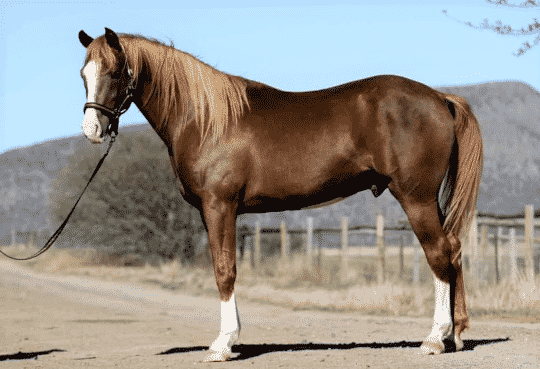
Credit to Olford Arabian Stud
The Crabbet line started in England in the late 1800s from imported Arabians brought to Crabbet Park Stud. While abroad, members of the English nobility fell in love with the breed, which led them to start a breeding program.
After the initial arrival of the imported Arabians, Wilfrid Scawen Blunt and Lady Anne Blunt set out to Syria, Iraq, and Saudi Arabia to bring back the best Arabian horses they could find. They carefully studied the lineage of the horses to produce the best of the breed.
Throughout the 93 years, Arabians were bred to be larger “super horses” with a sturdier conformation. They typically don’t possess as much of a dished nose as the Egyptian line does.
Crabbet Arabians make stellar riding horses because of their soundness, athletic ability, and good temperaments. The Crabbet type of Arabian horse is a popular breed for showjumping and dressage. Today, the majority of Arabians can trace back to the Crabbet bloodlines.
Shagya Arabian
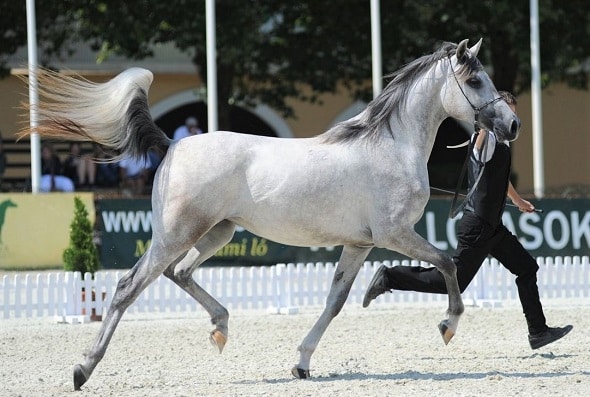
The Shagya-Arabian is a unique type of Arabian horse developed over 200 years in the Astro-Hungarian empire from Arabian stock and modern riding breeds.
Many people consider the Shagya a type within the Arabian breed, whereas others consider them part Arabians or Anglo-Arabians.
The Shagya-Arabian was created in 1789 by the Hungarian military. They sought a cavalry horse that contained all the Arabian characteristics but with a larger size and greater jumping ability.
Breeding of the Shagya included desert bred Arabian stallions with southeastern European mares that were largely descended from Arabian stock. Thoroughbreds and Lippizaners were added to the stock to improve size and movement.
These outstanding horses gained their name from the magnificent Arabian stallion Shagya, who influenced the bloodlines. Shagya was tall and remarkably strong, and he passed these traits to his offspring. Most Shagyas’ can be traced back to Shagya.
The Shagya has been carefully bred for their size, athletic ability, and strength, which in return has made them fantastic sport horses. They are typically taller than the average Arabian, standing at 15-16 hands tall. Their sturdy yet elegant builds have led them to grow in popularity.
source: horseyhooves.com








